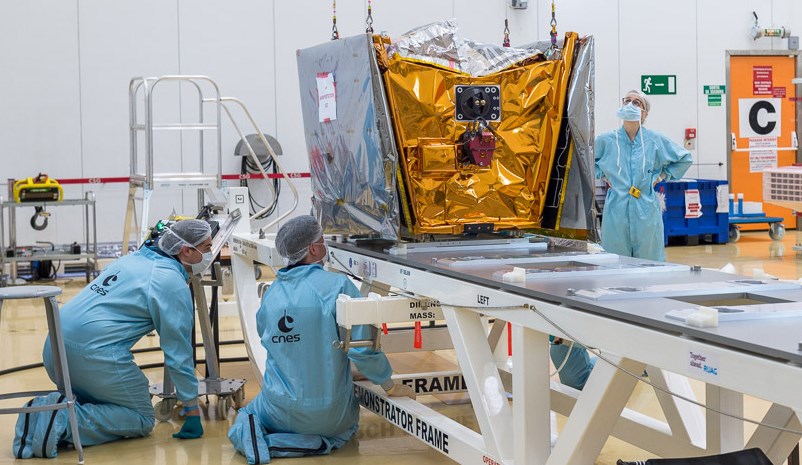
We will not agree to limitations on the capabilities and numbers of our missile defense systems. homeland and our Allies and partners around the world from the proliferation of ballistic missiles. We are committed to deploying effective missile defenses to protect the U.S. While we can work cooperatively together, we cannot agree to the pre-conditions outlined by the Russian Government. First, it would allow Russia to see with its own eyes what we are doing on missile defense and it will give us time to demonstrate how our systems operate.Įt me be clear. Missile defense cooperation can achieve two very important objectives. Third, the U.S.-Poland agreement for the Phase 3 land-based site entered into force as well.Īnd then a few weeks later in early October, Spain agreed to serve as a home port for four Aegis destroyers.Īs we like to say in the United States, that’s not bad for government work.Īt the same time as we are working with our NATO Allies, there is a tremendous opportunity to develop a meaningful strategic partnership with Russia in the area of missile defense cooperation. Second, we signed the Ballistic Missile Defense Agreement with Romania to host the Phase 2 land-based SM-3 site. It has been a great privilege for me to have worked so closely with all of our Allies over the last couple of years to reach this point, especially my colleagues in Poland, Romania, Spain, and Turkey.īecause of their support and leadership, for which we are incredibly grateful, we were able to reach agreement on the basing of our missile defense assets in Europe.Īs you know, last September, we made three big announcements.įirst, Turkey agreed to host the Phase 1 ANTPY-2 radar.

forces against the existing ballistic missile threats. This progress was only possible because our NATO Allies embraced President Obama’s European Phased Adaptive Approach (EPAA), which is focused on protecting our European allies and deployed U.S. That means that NATO now has its first missile defense radar, its first interceptors, a single commander, and a NATO command and control system for ballistic missile defense. In that year-and-a-half period, the United States and our NATO Allies have achieved an operationally significant peacetime ballistic missile defense capability. Department of State: The progress on missile defense is remarkable given that NATO only made its decision to develop a territorial ballistic missile defense capability 18 months ago.

Navy by 2028 and will also carry the Trident II (D-5) SLBM.From Ellen Tauscher, the U.S. The lead SSBN of the Columbia-class is expected to be delivered to the U.S. Starting in 2031, the new Columbia-class will slowly begin replacing the Ohio-class fleet as the main leg of the U.S. Navy at the moment operates 14 Ohio-class SSBNs, each capable of carrying up to 24 Trident II (D-5) SLBMs. Yet it recently underwent a life extension that will keep the strategic weapon system operational through the late 2040s. The U.S. The SLBM was originally designed with a life span to 2024. Just $5 a month.Īccording to the Bulletin of the Atomic Scientists: “The Trident D5s carry three types of warheads: the 100-kiloton W76/Mk-4, the 100-kiloton W76-1/Mk-4A, and the 455-kiloton W88/Mk-5 warhead, the highest-yield ballistic missile warhead in the U.S.
MISSILE COMMANDER 2031 FULL
housing the warhead.Įnjoying this article? Click here to subscribe for full access. The SLBM is armed with multiple independently targetable reentry vehicles each carrying a thermonuclear warhead. The Trident II (D5) is a three-stage, solid propellant ballistic missile with a range of about 4,000 nautical miles or around 7,400 kilometers. Get briefed on the story of the week, and developing stories to watch across the Asia-Pacific. “The missile tests were not conducted in response to any ongoing world events.” Diplomat Brief Weekly Newsletter N The September 2019 flight tests were “conducted on a recurring, scheduled basis to evaluate and ensure the continued reliability and accuracy of the system,” according to the Navy. The last test launch of Trident II (D5) took place in May of this year when the USS Rhode Island fired an unarmed SLBM from a submerged position off the coast of Florida as part of a so-called Demonstration and Shakedown Operation (DASO).

It marked the 176th in the line of successful flights of the Trident II (D5) SLBM. Navy press statement, the four test launches were part of a Commander Evaluation Test (CET) with the primary goal of validating performance expectations of the submarine-launched Trident II D5 ballistic missiles (SLBM). The first two launches took place on September 4 and the last two on September 6. Navy conducted four scheduled missile test firings of unarmed Trident II (D5) missiles from the Ohio-class nuclear-powered ballistic missile submarine (SSBN), USS Nebraska (SSBN-739), off the coast of Southern California this month.


 0 kommentar(er)
0 kommentar(er)
